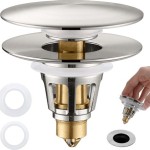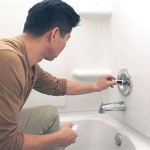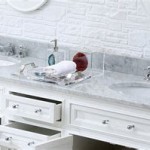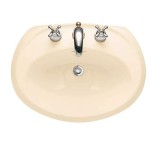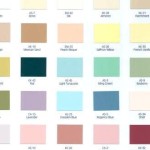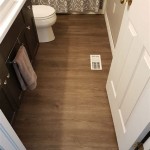What Is the Best Top for a Bathroom Vanity Unit?
Choosing the right top for a bathroom vanity unit is a significant decision, influencing both the aesthetic appeal and the functionality of the bathroom. The market offers a diverse range of materials, each possessing unique characteristics that affect durability, maintenance requirements, cost, and overall style. Selection requires careful consideration of these factors to align with individual needs and preferences.
The ideal vanity top should withstand the daily rigors of a bathroom environment, including exposure to moisture, temperature fluctuations, and potential staining from cosmetics and cleaning products. Moreover, it should complement the overall design scheme of the bathroom, enhancing its visual appeal. Understanding the properties of common vanity top materials is crucial for making an informed choice.
Durability and Longevity
The longevity of a bathroom vanity top is directly related to its durability. Frequent use and exposure to harsh conditions necessitate a material that can withstand wear and tear. The following materials are frequently chosen for their robustness:
Granite: Granite is a natural stone renowned for its exceptional durability and resistance to heat, scratches, and stains, provided it is properly sealed. Its inherent density makes it less susceptible to water damage, a critical factor in humid bathroom environments. The natural variations in granite patterns and colors add unique visual interest, making it a popular choice for high-end bathrooms. However, granite is a porous material, requiring regular sealing to prevent staining and bacteria buildup. The cost of granite can also be a significant factor, as it is generally more expensive than other options.
Quartz: Quartz is an engineered stone composed of crushed quartz crystals bound together with resin. This composition results in a material that is non-porous, making it highly resistant to stains, scratches, and bacteria. Unlike granite, quartz does not require sealing, making it a low-maintenance option. Quartz is available in a wide range of colors and patterns, offering a consistent look that is often preferred in modern bathroom designs. While it is generally less expensive than high-end granite, quartz still represents a significant investment. Its resistance to heat is also slightly lower than that of granite, so caution should be exercised when placing hot styling tools on the surface.
Solid Surface: Solid surface materials, such as Corian, are synthetic materials composed of acrylic polymers and minerals. They are non-porous, making them resistant to stains, scratches, and mildew. Solid surface countertops can be seamlessly integrated with sinks, creating a smooth and hygienic surface. They are also repairable; scratches and minor damage can often be sanded out. While solid surface materials offer good durability, they are generally less heat-resistant than granite or quartz and can be susceptible to damage from harsh chemicals. They offer a more cost-effective alternative to natural stone while still providing a durable and aesthetically pleasing surface.
Porcelain: Porcelain is a ceramic material known for its high strength and resistance to water, stains, and scratches. Large-format porcelain slabs are increasingly being used for vanity tops, offering a seamless and modern look. Porcelain is also resistant to heat and UV damage, making it suitable for bathrooms with abundant natural light. While porcelain is durable, it can be prone to chipping if subjected to heavy impact. Installation requires specialized skills due to the size and weight of the slabs. The cost of porcelain can vary depending on the design and thickness of the slab.
Aesthetics and Design Considerations
The aesthetic appeal of a vanity top is crucial for creating a cohesive and visually pleasing bathroom design. The material chosen should complement the style of the vanity cabinet, the flooring, and other bathroom fixtures. Different materials offer different aesthetic options, which should be carefully considered:
Marble: Marble is a luxurious natural stone prized for its elegant veining and classic beauty. Each slab of marble is unique, offering a distinctive look that is highly sought after. While marble is visually stunning, it is a porous material and requires diligent sealing to prevent staining and etching from acidic substances. It is also relatively soft and prone to scratches. The cost of marble can be significant, reflecting its exclusivity and the effort required for its maintenance. Marble is best suited for bathrooms where a sophisticated and timeless aesthetic is desired, and where careful maintenance is prioritized.
Concrete: Concrete vanity tops offer a modern and industrial aesthetic. They can be customized with various pigments and aggregates to achieve a unique look. Concrete is durable and can be sealed to resist staining and water damage. However, concrete is a porous material and requires regular sealing. It can also be prone to cracking, especially if not properly reinforced. The weight of concrete can also be a factor, requiring a sturdy vanity cabinet for support. Concrete vanity tops are often handcrafted, resulting in variations in color and texture that add to their unique character.
Wood: Solid wood vanity tops offer a warm and natural aesthetic. They can be made from various wood species, each with its own unique grain pattern and color. Wood vanity tops require a protective sealant to prevent water damage and warping. Proper ventilation in the bathroom is also essential to minimize moisture exposure. Wood can be stained or painted to match existing bathroom decor. While wood can add a touch of elegance and warmth, it requires more maintenance than other options and is more susceptible to damage from moisture and temperature fluctuations. Hardwoods like oak and maple are generally more durable choices than softwoods.
Laminate: Laminate vanity tops are a cost-effective option that offers a wide range of colors and patterns. Laminate is a synthetic material made by bonding layers of plastic laminate to a particleboard or MDF core. It is relatively durable and easy to clean. However, laminate is not heat-resistant and can be damaged by hot objects. It is also susceptible to scratching and chipping. Laminate vanity tops are a practical choice for budget-conscious renovations or for bathrooms that do not require the high-end aesthetic of natural stone or engineered materials.
Maintenance and Cost Considerations
The long-term cost of a vanity top extends beyond the initial purchase price. Maintenance requirements, including cleaning, sealing, and potential repairs, should be factored into the overall cost assessment. The following considerations are important when evaluating the cost-effectiveness of different materials:
Sealing Requirements: Porous materials like granite and marble require regular sealing to prevent stains and bacteria growth. The frequency of sealing depends on the type of stone and the level of use. Sealing involves applying a sealant to the surface to create a barrier against moisture and stains. While sealing is relatively easy to do, it adds to the ongoing maintenance requirements of the vanity top. Non-porous materials like quartz and solid surface do not require sealing, making them a low-maintenance option.
Cleaning and Care: The ease of cleaning and care is a significant factor in maintaining the appearance of a vanity top. Non-porous materials like quartz and solid surface are easy to clean with mild soap and water. Porous materials like granite and marble require special cleaning products to avoid damaging the surface. Abrasive cleaners should be avoided as they can scratch and dull the finish. Regular cleaning is essential to prevent the buildup of soap scum and other residues.
Repair Costs: The ability to repair scratches, chips, or stains can significantly extend the lifespan of a vanity top. Solid surface materials can often be repaired by sanding out minor imperfections. Natural stone materials can be repaired by professional stone restoration companies. Laminate and wood vanity tops are more difficult to repair, and often require replacement if damaged. The cost of repairs should be considered when evaluating the overall cost of a vanity top.
Installation Costs: Installation costs can vary depending on the material and the complexity of the installation. Heavy materials like granite and concrete require professional installation to ensure proper support and prevent damage. Lightweight materials like laminate and solid surface can often be installed by homeowners. Installation costs should be factored into the overall budget for the vanity top project.
Ultimately, the best top for a bathroom vanity unit is the one that aligns with individual needs, budget, and aesthetic preferences. Each material offers a unique combination of durability, style, and maintenance requirements. Careful consideration of these factors will ensure a satisfying and long-lasting investment.

5 Best Bathroom Vanity Countertop Options
:strip_icc()/102130266-3174ac7d31314c7abfc80a1b65a11dd6.jpg?strip=all)
18 Luxurious Bathroom Countertop Ideas For All Budgets

Bathroom Vanity Styles To Fit Your Space Forbes Home
:strip_icc()/102090522-84a93b00dada4cacae91bcc78b5211c8.jpg?strip=all)
18 Luxurious Bathroom Countertop Ideas For All Budgets

What Are The Best Surfaces For Bathroom Countertops

6 Modern Bathroom Vanity Design Ideas Lily Ann Cabinets

6 Best Bathroom Countertops Chic Countertop Materials

44 Bathroom Vanity Tops Best Countertop Designs

The Top Colour Trends For Vanities Vbathroom
:strip_icc()/102227038-7f5a5ef7c99948bd817d94db91e36084.jpg?strip=all)
18 Luxurious Bathroom Countertop Ideas For All Budgets
Related Posts
